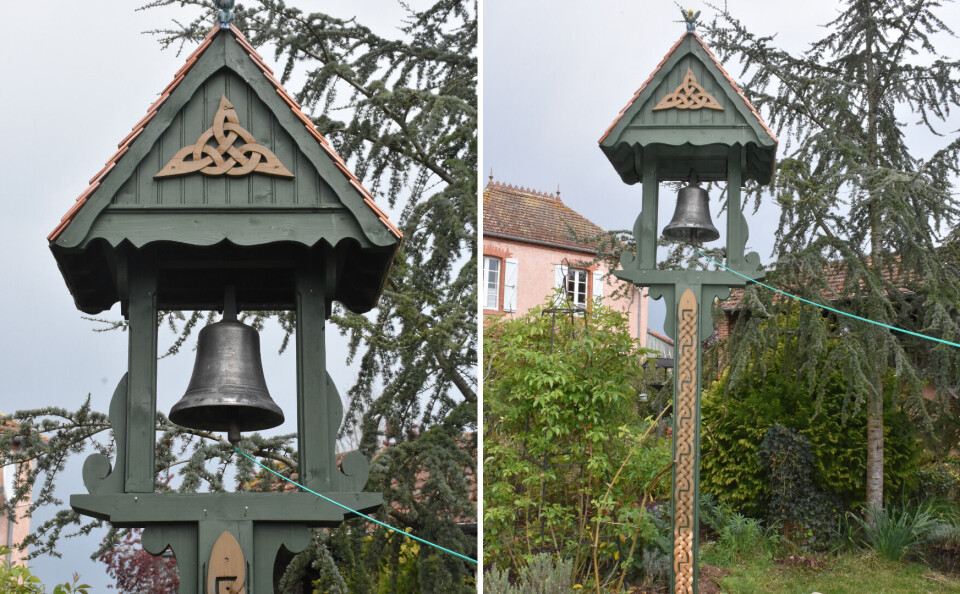-
Owners of French mill seek help tracing history
'We are looking for old photographs from before it closed,' say couple who restored the building
-
How to set up a fuse box in a French home
Columnist Nick Inman charts the ups and downs of renovating an old French farmhouse
-
When should you avoid doing DIY in France
Columnist Nick Inman helps you decide when to contact - and to wait for - a professional
French renovation: Bell tower collapse is a chance to ring the changes
Writer Nick Inman is impressed by his friends’ ornate rebuilding of a bell tower on their property, which showcases the couple’s skills and interests

There are doorbells and then there are door bells.
Normally, the device you use to alert the owner of a house to your presence from outside is so discreet you do not notice it.
You certainly do not stop to admire the handiwork involved in an electric button, which is designed to be as small and unobtrusive as possible.
Conspicuous feature
However, if you live in the countryside, have the space and do not have close neighbours, why not make the doorbell a conspicuous feature that every visitor cannot help but admire?
When my friends David Bowden and Mo Duck bought their house in the hills of Bigorre (Hautes-Pyrénées), it came with a remarkable door bell: a church bell hanging from a purpose-built tower and connected to the street gate by a rope, with a romantic sound reminiscent of remote mountain chapels.
“You could hear the ringing from anywhere on our property,” says David.
The structure around it, however, left much to be desired. It was made from chipboard and MDF – a material that swells and disintegrates when exposed to wet weather – and was covered in unattractive roofing felt.
Same model – new materials
When this flimsy bell tower blew down, David saw it as an opportunity to replace it with one that reflected the couple’s skills and personalities.
He decided to reconstruct it on the same model – but with some important changes.
This time, the structure had to be of solid wood. It is four metres tall and top-heavy so it had to be planted in a firm foundation – a metre of concrete – to resist the wind.
The original was undecorated.
David, a skilled carpenter among many other things, has a particular knack for creating ornate woodwork and he decided the new tower would have a Celtic theme.
A graceful vertical column of knotwork climbs the square-sectioned shaft of the tower, and this is picked out in gold paint against a green background.
There is also an endless knot motif (representing eternity, since it has no beginning or end) on the gable of the roof.
‘Proper little house’
At the top of the tower, above the gantry on which hangs the bell, David wanted to make a “proper little house”.
The actual design of this is fairly simple but the execution is exquisite.
As a weatherproof covering, roofing felt was out of the question and standard off-the-shelf builder’s tiles were going to be too big and heavy for the purpose, as well as being completely out of keeping with the arts and crafts approach.
“Mo is a potter,” says David, “and I thought: why don’t we make miniature Kent peg tiles to use on the bell tower?”
There are 90 of these tiles on each side of the steeply pitched roof. They are made of clay and fired in Mo’s kiln.
Each has two little holes so that the tiles can be fixed, overlapping, to the roof, using wooden pegs or nails.
As they are handmade, each one has a slightly different colour and texture, adding to the visual delight of the whole.
The finished structure is still a doorbell, with the purpose of summoning the occupants to the gate, but it looks and sounds as if it is straight out of Rivendell, the domain of the elves in The Lord of the Rings.
It is not just a doorbell: it is also a work of art and a demonstration of what any of us could do (perhaps not quite so well) given the patience, skill and time.
Related articles
DIY in France: Fixing garden wall is opportunity to study old methods
DIY: Buying wood board for French property renovation can be minefield
























